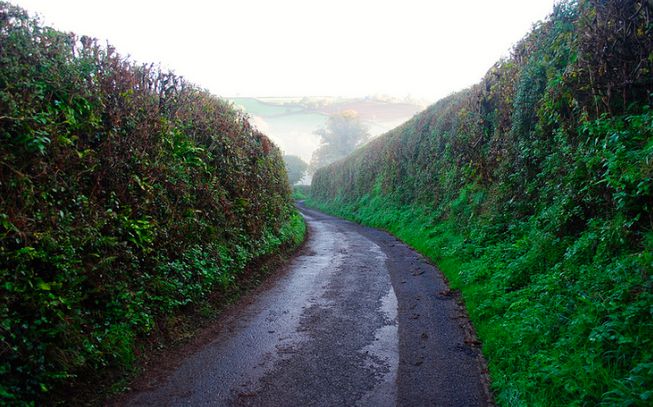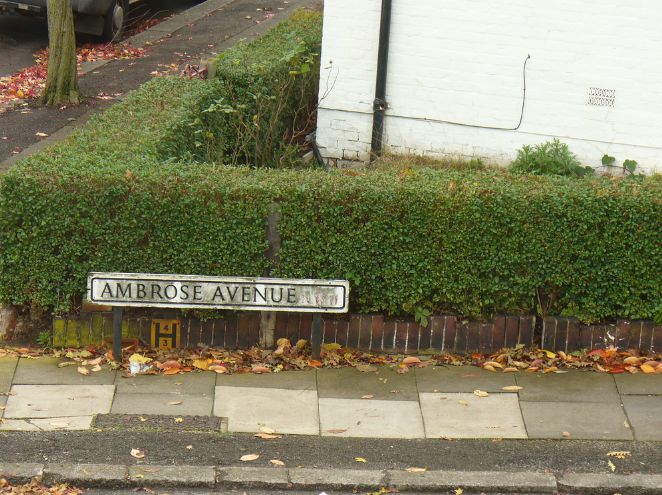Source: mnn.com
Published: May 24, 2017

The British countryside is famed for its hedgerows. According to scientists, cities need more dense lines of shrubs in order to effectively combat automobile-borne air pollution. (Photo: Jenny Brown/flickr)
By Matt Hickman
Make no mistake: the temperature-lowering, mood-improving, habitat-providing, air-scrubbing power of urban trees cannot be underestimated.
But as far as that last bit — the removal of air pollutants — goes, British researchers have concluded that trees in urban environments often play second fiddle to the hedgerow.
As quintessentially British as sarcasm and salad cream, hedgerows, in the words of hedge advocacy group Hedgelink are a “part of our cultural and landscape heritage which ranks alongside great cathedrals, quaint villages and spectacular coastlines.” The beneficial ecological impacts that hedges have on the landscape are vast and well-documented: they reduce soil erosion, prevent flooding and provide valuable habitat to a host of rare and threatened species, ranging from butterflies to dormice to a tiny spiny mammal that’s not technically a hog, is beloved in the U.K. and, yep, is famously known to frequent hedges.
But as new research published in the journal Atmospheric Environment suggests, the pollutant-trapping powers of hedges are frequently (and literally) overshadowed by trees. In traffic-heavy cities where air quality is a top concern, the study’s authors believe it should be the other way around: hedges should be planted, not trees (although trees, of course, are more than welcome any time).
The reason for this is simple: trees don’t really start absorbing pollutants released in the air until canopy-level, while low-slung hedges are green and dense with foliage from the bottom up. Furthermore, a busy road in a dense urban center that’s lined with hedgerows is better equipped to directly absorb the toxic fumes emitted by passing vehicles.
Lead author Prashant Kumar, a professor at Surrey University, lays it all out to the BBC: “The big thing about hedges is that they are right down at tailpipe level. The emissions from vehicles starts to dilute very quickly as you move away from the road — so any hedge that acts as a barrier slowing down the airflow and catching pollutants on the leaves is going to offer people in homes better protection.”
In fact, Kumar and his colleagues found that in London’s “street canyons” — narrow roadways flanked by tall buildings — trees actually trap health-compromising pollutants at street level, exacerbating an already unpleasant situation.
Trees: Better suited for wide American roads?
Kumar explains goes on to explain that trees’ pollutant-absorbing powers are better suited for American cities, where the streets are wider (and press secretaries more prone to seek a quick escape.) Hedgerows, so ubiquitous in the British suburbs and countryside, work better along tighter traffic corridors that are common throughout the U.K.
The research suggests that to tame air pollution in cities, hedges — the more leaf surface area the merrier — should be strategically planted as close to the road as possible so that pollutants aren’t given the opportunity to hang around for too long. “ … in Britain we need to start thinking about planning for hedges to harness their full potential in cities like London,” Kumar tells the Telegraph.
The team plans on continuing research into the remarkable pollution-trapping capabilities of hedges, including which species of plant are the most effective and what the optimum height for streetside urban hedgerows might be.
The Telegraph notes that this bit of scientific high praise for the humble hedgerow comes with a bit of weird timing as numerous councils across the U.K., many struggling with diminished budgets, begin to charge residents for the pick-up of household organic waste and lawn trimmings. The new policy is apparently “raising fears” that homeowners, in an effort to get around the fee, will remove their well-groomed hedgerows — along with other aesthetically pleasing and habitat-providing landscaping elements — altogether. Not good.
Per the Royal Horticultural Society, the five top plants for hedging in the U.K. are the coniferous, topiary-friendly yew; the evergreen Portuguese laurel; English lavender; Rose rugosa, which is ideal for coastal gardens; and the native hornbeam.

